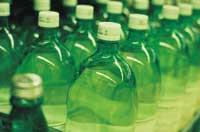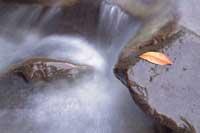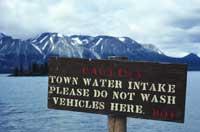Bottled or tap water?

According to the report 'Bottled water: understanding a social phenomenon', bottled water is no healthier or safer than tap water and is 1,000 times more expensive. Neither for health, nor for the environment, nor for health, nor for the environment, and in the pocket makes a big hole. Why then do we want the water of so many bottles?
According to the report, drinking bottled water reflects a concrete life. In many cases, bottled water is replaced by tap water, for its better taste or for being considered safer and better quality. In fact, scandals that disrupt the food industry today and tomorrow, and water-borne diseases, have a major influence on consumer behavior. For example, trade in beef for mad cows has declined dramatically and consumer confidence will cost again.
The companies in the sector have taken great care to spread that bottled water is pure and safe, and society has taken up this message. But the only pure water that exists is distilled water and not recommended for drinking.
Mineral water and health
Already in Roman times, spas and mineral water were very successful, as they were considered beneficial for health. XIX. In the 20th century, spa owners continued to be fashionable among the rich and soon saw where the greatest benefits could be made. The water from the spas began to be sold in bottles and until the 1950s it was sold as a product for the conservation and improvement of health. Currently, mineral water is a common product that relates to well-being rather than health. Now mineral water is drunk to feel good because it provides energy or helps keep it thin and fit. It is increasingly sold as a substitute for soda and alcoholic beverages and is able to play the same social role as these. Above all, the report highlights the success of bottled water marketing.

However, the Food and Agriculture Organization of the United Nations (FAO) wanted to make clear that bottled water does not have a higher nutritional value than tap water. Many consumers think that bottled water comes from jumps of water, lakes, rivers and very clean wells, and that, only for that reason, it has a higher nutritional value than the tap, but it is false. Bottled water has the same (or less) calcium, magnesium and fluoride as tap water, with the only advantage of providing safety in places where water is contaminated. But if not, FAO recommends cooking or filtering water because it is reliable and much cheaper.
Environmental impact
Like any other industrial activity, the bottled water industry also affects the environment. On the one hand, bottled water, like tap water, must meet demanding quality requirements, so companies take care of their springs. This does not mean that bottled water improves overall water quality, as only exploited springs are protected and protection is limited to specific areas. In addition, not all the water in the bottle is clean in origin, they are treated long before being bottled.
However, the greatest environmental impact is due to bottles. Although they were formerly made of glass, today 70% of the bottles are made of plastic. Every year 1.5 million tons of plastic are used for the manufacture of water bottles and only one part is reused. Fortunately, the PET material is invading space to PVC and with it will achieve a lower environmental impact. PET is a lightweight, transparent plastic, easy to handle and can have more applications than PVC, in addition to being easier to recycle. A bottle with PET can become a polyester rug, a fabric to make clothes and a fiber, a huevero or another bottle. On the contrary, PVC when burned emits chlorine into the atmosphere and is difficult to recycle. In stores you can distinguish two types of bottles by their color. PVC are bluish, hard and PET are more transparent and soft. However, from an environmental point of view, tap water is the least polluting.
A promising market

Bottled water is the fastest growing sector in the food industry and is a highly competitive market. Each year increases by 7%. Global consumption of bottled water amounts to 89 billion liters per year. In the head are the Europeans, who consume an average of 85 liters of water per bottle. However, Asia and the Pacific are the most promising markets. In developing countries, bottled water has gone from being an exclusive drink for tourists to a daily drink. For example, in India there are more than 100 companies and the market increases by 50% each year.
Much of the market is in the hands of multinationals Danone and Nestlé. Nestlé controls 15.3% of the market and Danone 9%, but 75% of the market remains in the hands of local companies. Nestlé and Danone have so far sold mineral water, but have stated their clear intention to enter the purified water market. Coca-Cola and Pepsi companies have also joined the profitable bottled water market. As with soft drinks, they sell mineral concentrates to local companies for later sale in the form of purified water (see chart). For example, in 1995 Pepsi launched water from the Aquafina bottle in the United States and sales increased 126% in a year. In the ranking of bottled water vendors stood at 10th year. But despite decorating the bottles with imposing mountains, Aquafina prepares water from tap water. It is the water collected from the 11 urban sources, somewhat treated and mixed.
In view of this, companies that prepare tap water have also started selling their water in bottles to take advantage of the feeling that what comes in the bottle is better and safer than what comes from the tap. Open the tap, fill the bottle, close and sell 1,000 times more expensive. Because we look at the packaging more than the content.
Bottled water, not all are equal
To realize that there is bottled water from many brands you just have to go around the supermarket. You will find at least a dozen brands on the shelves. But in addition to the brand, the type of water can vary. Three types of water are distinguished: mineral water, spring water and purified water.

Mineral water must contain a certain amount of minerals for inclusion in this category and cannot receive treatment of alteration of the composition of the spring to the bottle. Community regulations are very strict. Spring water, however, should not contain a certain amount of mineral, but it cannot be treated either. These must meet the same quality requirements as spring waters.
Both mineral and spring water are groundwater. Purified water can be from river, lake or underground, but in all cases it is treated. They can be chemically treated to remove some components or add others, two waters of different characteristics can be mixed to obtain the final product, etc.
As for the preparation, the only difference between tap water and purified water is the sale of the second in bottles. However, 59% of the bottled water consumed in the world is purified water.
Published in the supplement Natura de Gara.
Buletina
Bidali zure helbide elektronikoa eta jaso asteroko buletina zure sarrera-ontzian











